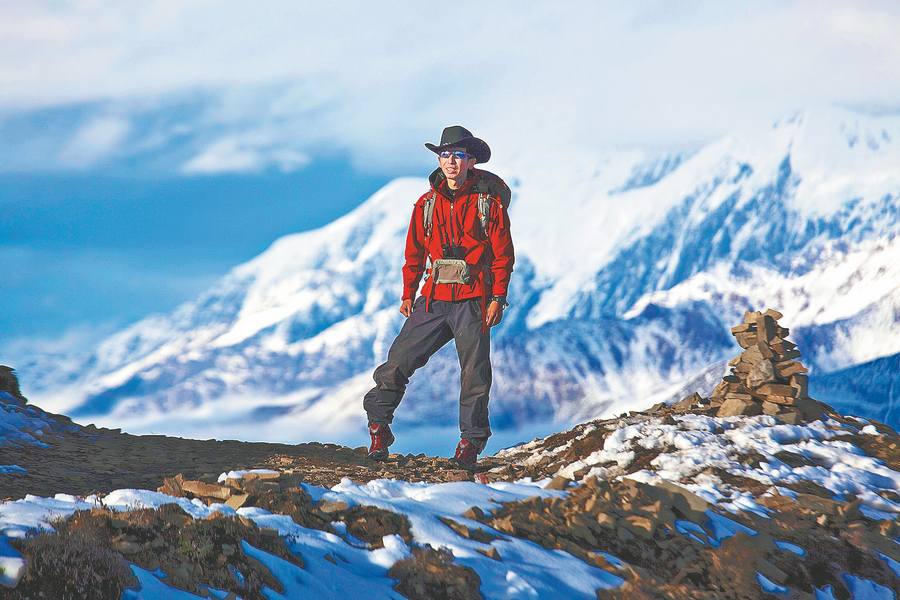

New discoveries
During the recent rock painting quest, Zhou and the rest of the team traversed high mountains and deep valleys, while overcoming the difficulties caused by high altitude and lack of oxygen.
Building on the preliminary investigation, on the recent trip, the team managed to discover six prehistoric rock painting sites in an area of approximately 1,800 square kilometers, encompassing high-altitude wasteland, grassland, wetland and river valley. Among them, five are located at an altitude above 4,600 meters, only the one situated in a river valley is at an altitude lower than 3,700 meters.
Zhou and his teammates then conducted on-site photography, collected geographical information including the topography, landforms and vegetation distribution related to the discovered sites.
The rock paintings are all painted with red pigments and depict various animals such as large deer and mountain goats, as well as anthropomorphic figures holding objects and wild animal claw prints.
"Rock paintings are traces left by early humans during hunting and are among the earliest conscious creations by humans," says Zhang Yasha, professor from the China rock art center with Minzu University of China. The center was one of the organizers of the expedition.
"The newly discovered rock paintings in the Haizishan region exhibit many stylistic features reminiscent of prehistoric rock paintings, in terms of the themes, image sizes, pattern characteristics and painting techniques, and they may be related to the unique rock art clusters of the Paleolithic era in Southwest China," Zhang says.
She believes those rock paintings are the first of their kind that have been found so far in Sichuan, and antedate most of the rock paintings found on the plateau before.
"They will play an important role in updating our understanding of rock art in the Qinghai-Tibet Plateau," Zhang says.
She says further study and analysis will be conducted on the content of the Haizishan rock paintings in collaboration with relevant departments in Garze.
Zhou was impressed by the sophistication of the paintings.
"Most rock paintings we find are sculpted into the rock and represent abstract symbols, but the new ones were drawn, which is rare on plateau, and they depict evident hunting elements, with distinctive wild animals," says Zhou, who has conducted field investigations at over 150 independent rock painting sites on the Qinghai-Tibet Plateau.
Moreover, the images are much bigger than his previous finds, with some animal figures being 2 meters high. "It shows the ancient put in more efforts in those paintings," Zhou says.
The majority of the Haizishan rock paintings in Garze are located at altitudes above 4,600 meters, which is different from the typical distribution of previously found rock carvings on the plateau, mostly at altitudes ranging from 4,000 to 4,400 meters.
Therefore, Zhou holds that the ancient population behind these discovered painted rock art sites should provide unique insights for the study of prehistoric life on the Qinghai-Tibet Plateau.
"These ancient people lived at higher altitudes, but the reason for their hunting during the Paleolithic period could be attributed to the relatively warmer climate at that time," he explains.
"It is even observed that several of the identified locations no longer have grazing areas, while these rock paintings should serve as markers indicating the presence of game, serving as reminders for both themselves and future generations. They provide new avenues for understanding our ancient past," he adds.
Contact the writer at yangfeiyue@chinadaily.com.cn